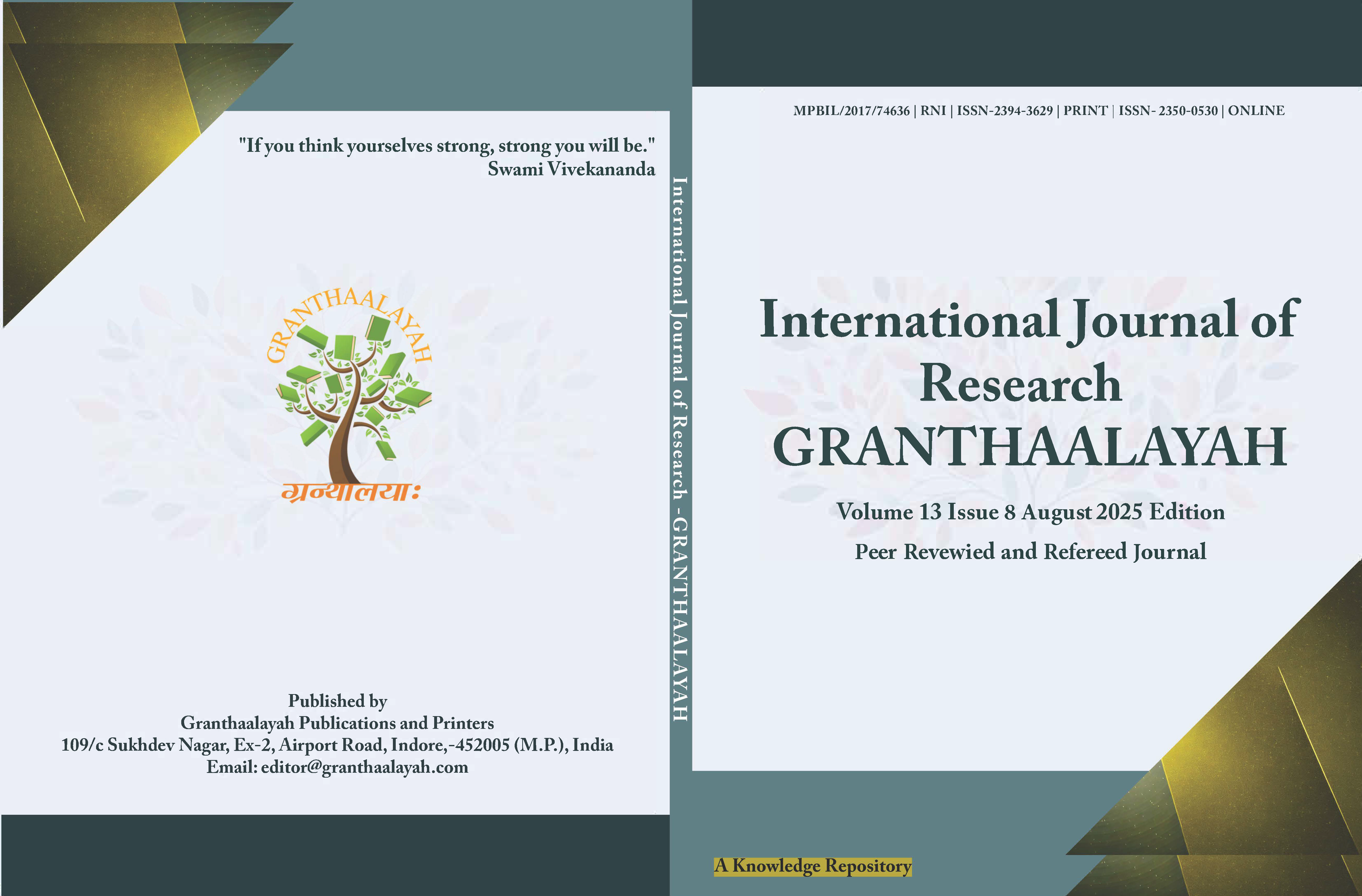INTEGRATIVE OMICS APPROACHES IN UNRAVELING PLANT STRESS MECHANISMS
DOI:
https://doi.org/10.29121/granthaalayah.v13.i8.2025.6415Keywords:
Plant Stress, Omics Integration, Genomics, Transcriptomics, Proteomics, Metabolomics, Systems BiologyAbstract [English]
Plants encounter a wide array of abiotic and biotic stresses, including drought, salinity, extreme temperatures, pathogens, and heavy metals, which severely limit agricultural productivity. Understanding stress responses at the molecular level is crucial for developing resilient crops. In recent years, omics technologies—genomics, transcriptomics, proteomics, metabolomics, and phenomics— have emerged as powerful tools for dissecting the complex regulatory networks governing plant stress adaptation.
This article reviews advances in integrative omics approaches that provide holistic insights into plant stress tolerance mechanisms. Genomics has facilitated the identification of stress-responsive genes, while transcriptomics reveals dynamic gene expression under stress. Proteomics and metabolomics provide information on protein modifications and metabolic fluxes, respectively, and phenomics bridges molecular data with physiological responses. Integrating multi-omics datasets with computational modeling and systems biology enables the construction of predictive networks for stress resilience.
Case studies on Arabidopsis thaliana, rice (Oryza sativa), wheat (Triticum aestivum), and soybean (Glycine max) demonstrate the power of omics integration in identifying biomarkers, regulatory hubs, and candidate genes for crop improvement. Challenges remain in data standardization, big data analysis, and translating omics insights into field applications. Nevertheless, integrative omics promises a transformative path toward sustainable agriculture in the era of climate change.
Downloads
References
Boyer, J. S. (1982). Plant Productivity and Environment. Science, 218(4571), 443-448.
Gupta, P., Redden, R., Sharma, R., & Varshney, R. K. (2020). Advances in Understanding Drought Tolerance in Wheat. Theoretical and Applied Genetics, 133(6), 1601-1620. https://doi.org/10.1007/s00122-020-03583-3 DOI: https://doi.org/10.1007/s00122-020-03583-3
International Rice Genome Sequencing Project. (2005). The Map-Based Sequence of the Rice Genome. Nature, 436(7052), 793-800. https://doi.org/10.1038/nature03895 DOI: https://doi.org/10.1038/nature03895
Li, H., Chang, J., Chen, H., Wang, Z., & Gu, X. (2020). Integrative Analysis of Heat Stress Responses in Arabidopsis. Plant Physiology, 183(4), 1660-1677.
Ma, H., Zhao, J., & Meng, X. (2016). Proteomic Analysis of Soybean Response to Salinity Stress. Journal of Proteomics, 143, 73-87.
Obata, T., Witt, S., Lisec, J., Palacios-Rojas, N., & Fernie, A. R. (2015). Metabolite Profiles of Maize Under Drought Stress. Plant Physiology, 169(3), 1707-1723.
Xu, K., Xu, X., Fukao, T., Canlas, P., Maghirang-Rodriguez, R., Heuer, S., … Mackill, D. J. (2006). Sub1A is an Ethylene-Response-Factor-Like Gene that Confers Submergence Tolerance to Rice. Nature, 442(7103), 705-708. https://doi.org/10.1038/nature04920 DOI: https://doi.org/10.1038/nature04920
Zandalinas, S. I., Mittler, R., Balfagón, D., Arbona, V., & Gómez-Cadenas, A. (2021). Plant Adaptations to the Combination of Drought and High Temperatures. Physiologia Plantarum, 171(1), 3-20.
https://doi.org/10.1126/science.218.4571.443 DOI: https://doi.org/10.1126/science.218.4571.443
Published
How to Cite
Issue
Section
License
Copyright (c) 2025 Dr. Ragini Sikarwar

This work is licensed under a Creative Commons Attribution 4.0 International License.
With the licence CC-BY, authors retain the copyright, allowing anyone to download, reuse, re-print, modify, distribute, and/or copy their contribution. The work must be properly attributed to its author.
It is not necessary to ask for further permission from the author or journal board.
This journal provides immediate open access to its content on the principle that making research freely available to the public supports a greater global exchange of knowledge.






























